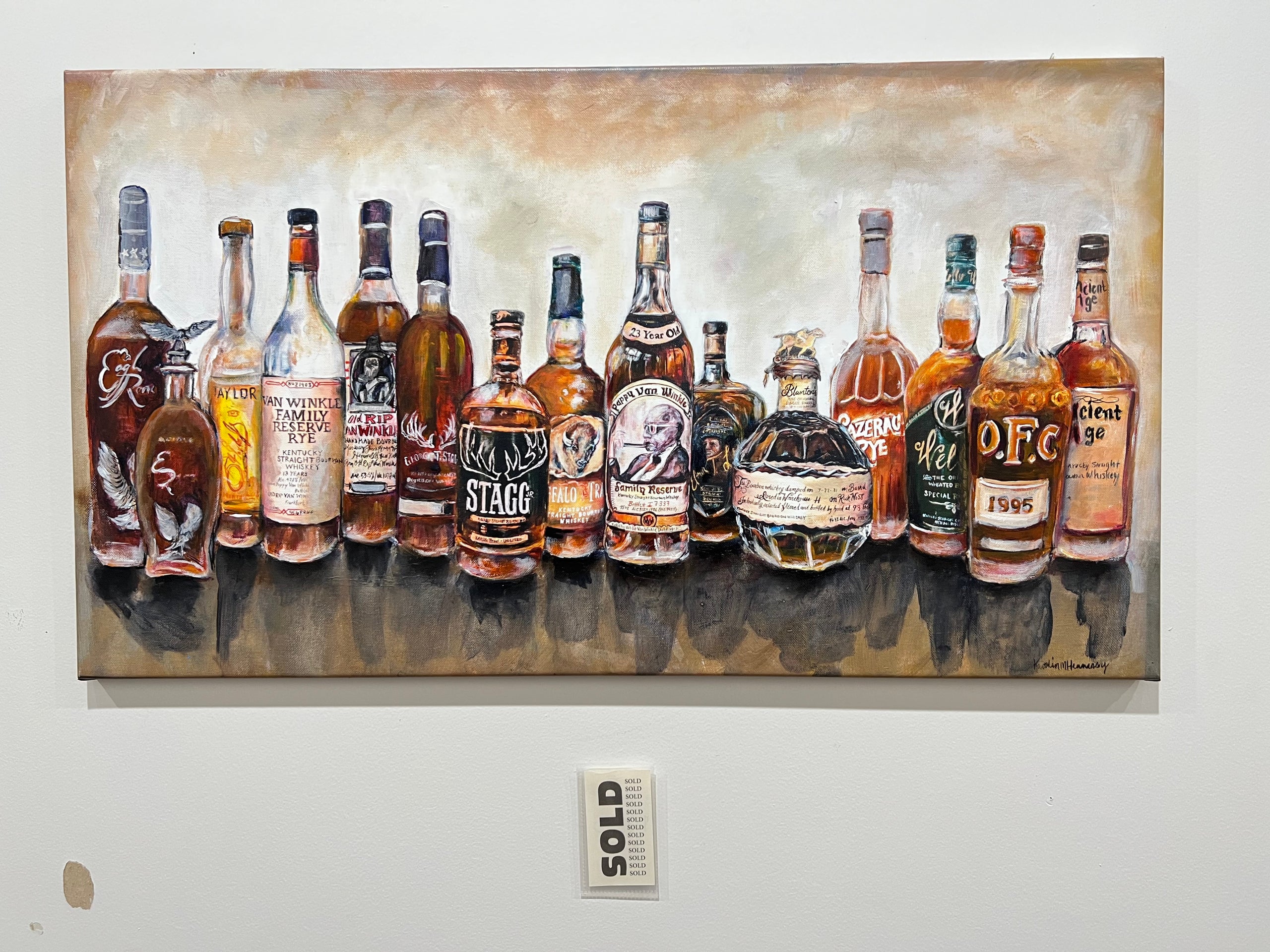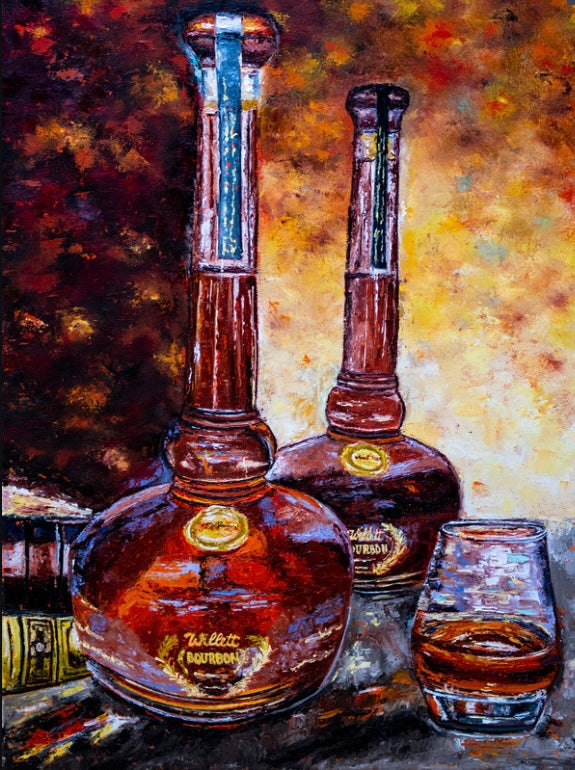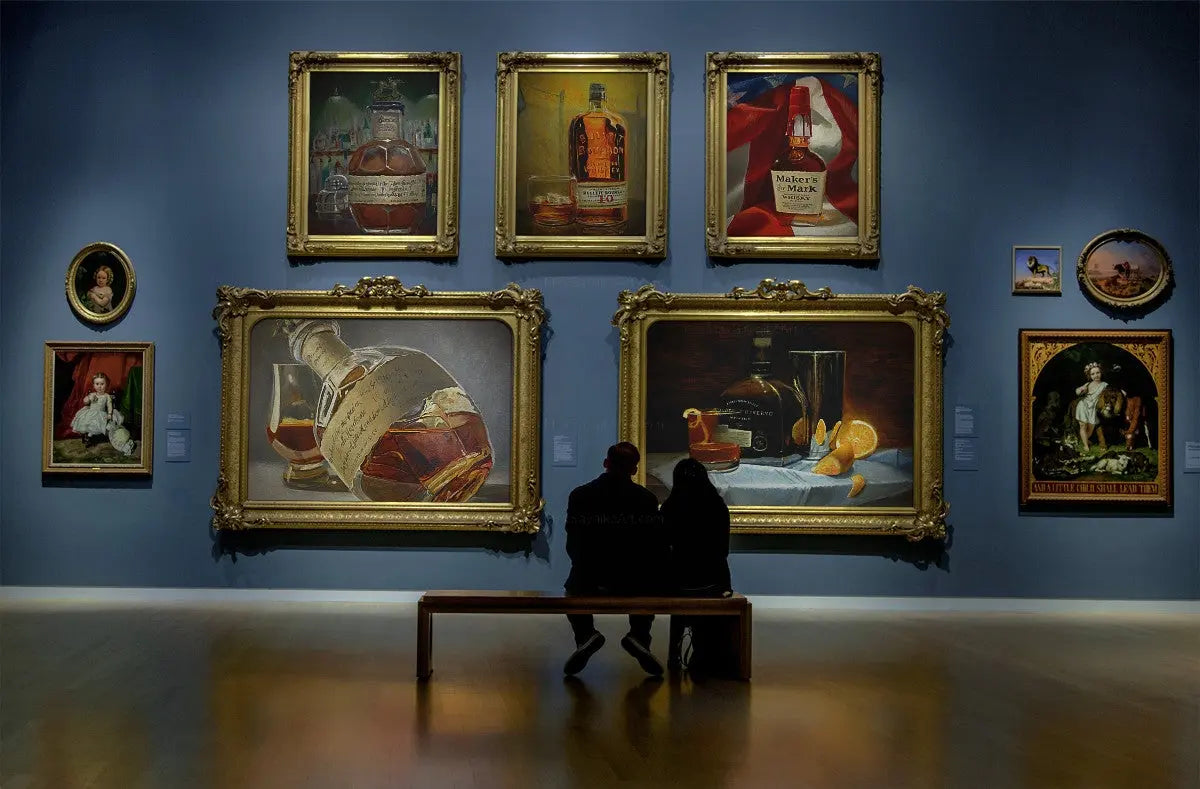The Allure of Realism Art: A Deep Study Whiskey's Rich Heritage
The Importance of Whiskey Art in Celebrating Heritage and Workmanship in the Beverage Industry
The complex connection in between scotch art and the party of heritage and craftsmanship within the drink industry can not be overstated. With thoughtfully designed tags and containers, bourbon brand names envelop their historical origins and the artisanal skills that specify their manufacturing approaches.
The Historic Origins of Whiskey
At the heart of bourbon's attraction exists a rich tapestry of historic origins that trace back to ancient human beings. The origins of scotch can be linked to the purification techniques of the Sumerians and Babylonians around 2000 BCE, where very early kinds of fermented grain drinks began to emerge. It was in the Center Ages that the art of distillation advanced significantly, particularly in Ireland and Scotland, leading to the creation of scotch as we know it today.
The term "scotch" itself obtains from the Gaelic word "uisce beatha," meaning "water of life." This phrase highlights the social importance of bourbon in Celtic societies, where it was frequently related to routines, celebrations, and communal bonding. By the 15th century, distillation became an identified craft within monastic areas, leading the way for the facility of lawful distilleries.
As trade routes increased, bourbon's popularity grew, transcending regional borders and recording the interest of aficionados worldwide. Realism Art. This historical journey shows not just the craftsmanship behind whiskey production yet likewise its indispensable role in social and social contexts, marking it as a substantial drink throughout background
Artistic Expression in Branding
Scotch branding stands as a compelling crossway of virtuosity and commerce, where visual identification plays a crucial duty in forming consumer assumption. The aesthetics of bourbon labels, packaging, and marketing materials reflect not just the brand's tale however also its core values and heritage. With imaginative expression, distilleries convey a story that resonates with customers, stimulating emotions and triggering links.
Using shade, typography, and imagery in branding offers to distinguish products in a saturated market. As an example, standard concepts might evoke a sense of authenticity and craftsmanship, while modern-day styles can signify innovation and forward-thinking. This critical imaginative direction boosts brand acknowledgment and loyalty, enabling customers to forge an individual relationship with the scotch they pick.
Furthermore, imaginative expression in branding typically functions as a celebration of local heritage. Distilleries regularly integrate regional icons or historical recommendations right into their designs, producing a local color that invites customers to partake in a wider social experience. Inevitably, the artistry behind scotch branding not just boosts aesthetic appeal however likewise improves the overall narrative of the brand, promoting a much deeper admiration for the craftsmanship and heritage embedded in each bottle.
Workmanship in Container Layout
The virtuosity evident in whiskey branding prolongs beyond visual identification to incorporate the workmanship associated with container design. Each bottle serves as a vessel not just for the spirit within, but likewise for the story it outlines its high quality, origin, and custom. The design procedure requires meticulous focus to information, as components such as shape, closure, and material add substantially to the general understanding of the whiskey.
Craftsmanship in container layout includes choosing premium glass that can enhance the whiskey's shade and clearness, while also providing a responsive experience for the customer. The silhouette this of the container have to be both cosmetically attractive and functional, often mirroring the heritage of the brand. Numerous distilleries select special shapes or Read Full Article printed logo designs that evoke a feeling of authenticity and background.
Additionally, the label layout and typography play a vital function in connecting the brand's narrative. Bourbon Art. A well-crafted bottle not just mesmerizes the customer's eye however likewise enhances the brand's dedication to high quality and tradition. By doing this, the craftsmanship of container design comes to be an important facet of the scotch experience, combining artistry with an extensive respect for heritage
Social Significance of Scotch Art
Commemorating custom and workmanship, the cultural relevance of whiskey art transcends plain aesthetic appeals, linking with the historic and social narratives of the regions where it originates. Each bottle functions as a canvas, depicting the special tales, folklore, and customs that have actually formed local whiskey-making methods. The detailed designs typically mirror the heritage of the distillers, incorporating signs and themes that reverberate with the culture and values of their neighborhoods.

In addition, scotch art plays a vital function in communal events and parties, serving as a substantial link in between individuals and their shared experiences. By appreciating the virtuosity in whiskey product packaging, customers cultivate a much deeper understanding and regard for the craft, ultimately improving their enjoyment of the beverage itself.
Modern Trends in Bourbon Presentation
Recently, the discussion of whiskey has progressed to reflect contemporary see this page preferences and fads while still honoring conventional workmanship - Realism Art. Distilleries are progressively concentrating on visual elements that improve the general alcohol consumption experience, bridging the gap between heritage and modernity
Cutting-edge container designs have emerged, commonly including sustainable materials and artistic labels that tell engaging tales. Several brands now collaborate with regional artists, infusing their products with special aesthetic expressions that reverberate with customers. In addition, limited-edition launches are often packaged in collectible containers, adding value and appeal for connoisseurs.

Conclusion
In conclusion, whiskey art serves as a vital conduit for expressing the heritage and craftsmanship inherent in the drink sector. Via detailed branding, cutting-edge container styles, and culturally considerable creative elements, whiskey brand names properly recognize their customs and connect with consumers.


Craftsmanship in container style includes selecting top quality glass that can enhance the bourbon's shade and clearness, while also giving a responsive experience for the consumer. In this way, the workmanship of bottle design comes to be an essential element of the whiskey experience, combining creativity with a profound regard for heritage.
In final thought, whiskey art offers as a crucial conduit for sharing the heritage and craftsmanship inherent in the drink market.